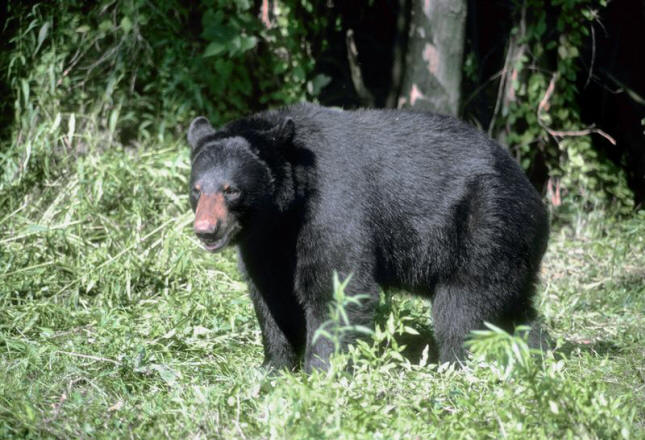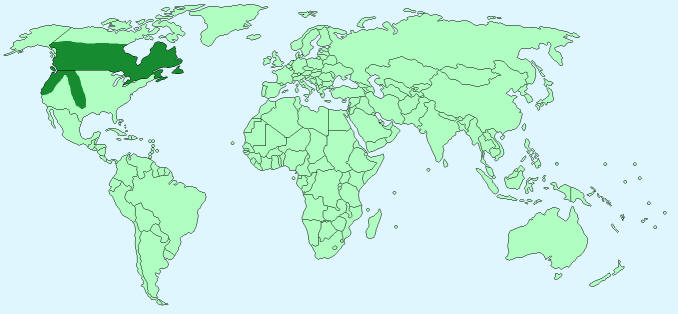Black Bear

Scientific Name – Ursus Americanus
Classification – Ursus
Gender Names – Male – Boar; Female – Sow; Baby – Cub
Collective Noun – Sloth or Sleuth
Average Height – all fours – 1 – 1.5 metres (3 – 4 ft); Upright – 1.5 – 2.3 metres (4 – 7 ft)
Average Weight – 57 – 250 kg (125 – 550 Ibs)
Top Speed – Land – 56.3 km/h (35mph); Swimming – 4.8 – 8km/h (3 – 5mph)
Life Expectancy – 15 – 20 years
Mating Season – May – June
Pregnancy – 7 months
Special Features – Does not hibernate in winter months but rather remains dormant (can be woken up if disturbed) feeding on body fat. Excellent swimmers and strong climbers.
Family Unit – Female and young cubs. Males and females without cubs remain solitary until breeding season.

Geographical Distribution – North America
World Population – 600,000-700,000
Conservation Status – Low risk
Natural Habitat – forests, swamps, tundra
Diet – Omnivore (plant and meat eater) – nuts, berries, plants, honey, salmon, insects
Predators – humans, other black bears
Harvard Reference for this page:
Heather Y Wheeler. (2015). Black Bear. Available: https://www.naturalhistoryonthenet.com/Mammals/black_bear.htm. Last accessed Friday, July 22, 2016
Mammals Pages
Features Classification Mammals A – Z
